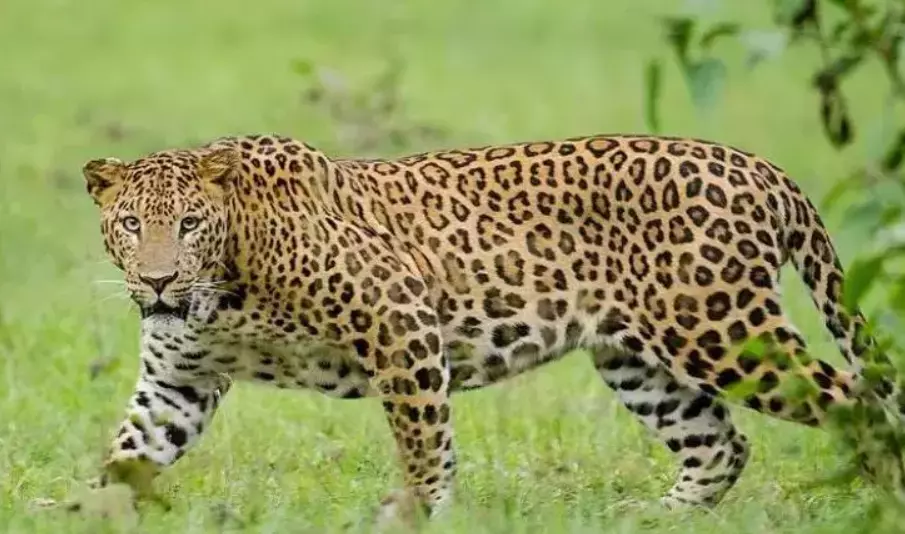Leopard dies in accident on NH in Nellore

Tirupati:A leopard lost its life after being hit by an unidentified vehicle on the National Highway in Marripadu Mandal’s Singanapalli village in Nellore district on Monday. The accident has brought to the forefront the pressing issue of wildlife safety in areas where natural habitats overlap with busy highways.
According to local residents, the accident occurred when the leopard attempted to cross the highway and was struck by a speeding vehicle. Eyewitnesses reported that the injured animal struggled in pain for nearly an hour before succumbing to its injuries. However, no one dared to approach or assist the leopard during its final moments due to fear.
Upon being informed of the incident, the police and forest department officials arrived at the spot and began investigating the circumstances surrounding the accident. Local residents and motorists were questioned, but details about the vehicle involved remain unknown. Forest department officials later took custody of the leopard’s carcass. Following formalities, including a post-mortem, the remains were buried in a forested area.
The death of the leopard highlights the increasing vulnerability of wildlife in areas where their natural habitats intersect with busy human thoroughfares. Similar incidents have been reported across the state in recent months. In November 2024, a leopard was killed by an unidentified vehicle on the outskirts of Madakasira town in Sri Sathya Sai district. Earlier, in February 2024, a female leopard cub was found dead on the Atmakur-Dornala road in the Nallamala forest of Kurnool district. Forest officials concluded that the cub had been fatally hit by a vehicle in the ghat section.
Experts and conservationists have repeatedly raised concerns about the lack of adequate measures to protect wildlife along highways passing through forested areas. A senior forest official said, “Incidents like these underscore the urgent need to implement wildlife-friendly infrastructure. Measures such as constructing animal corridors, installing warning signage, reducing vehicle speeds in forest zones, and conducting awareness campaigns for motorists can significantly reduce such accidents. Our team is also working on identifying high-risk zones to prioritise protective steps”.
